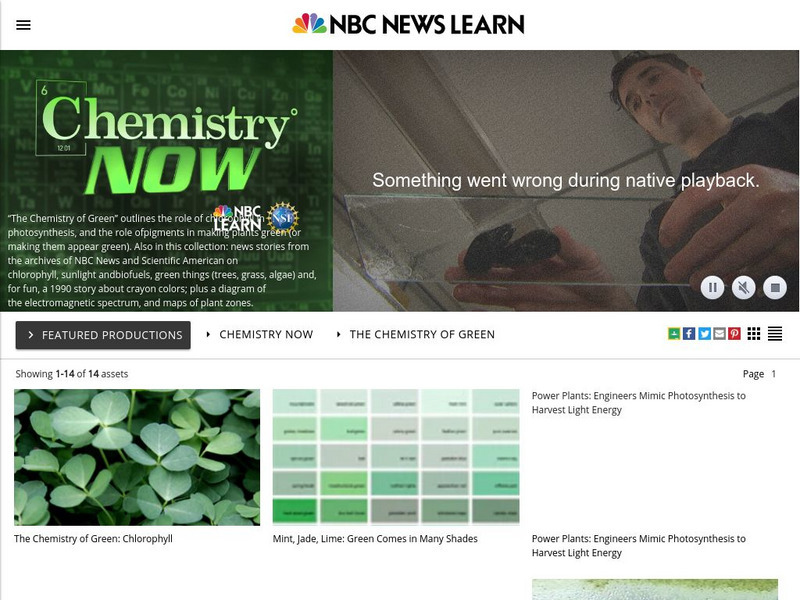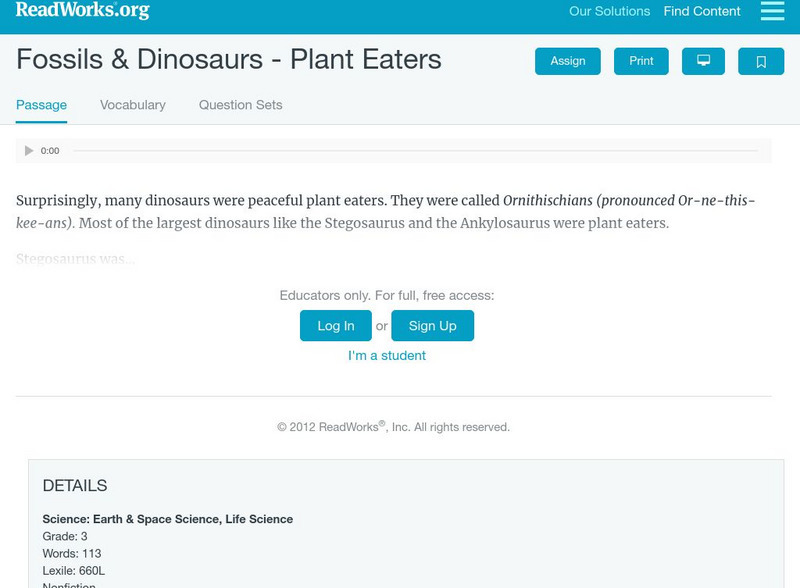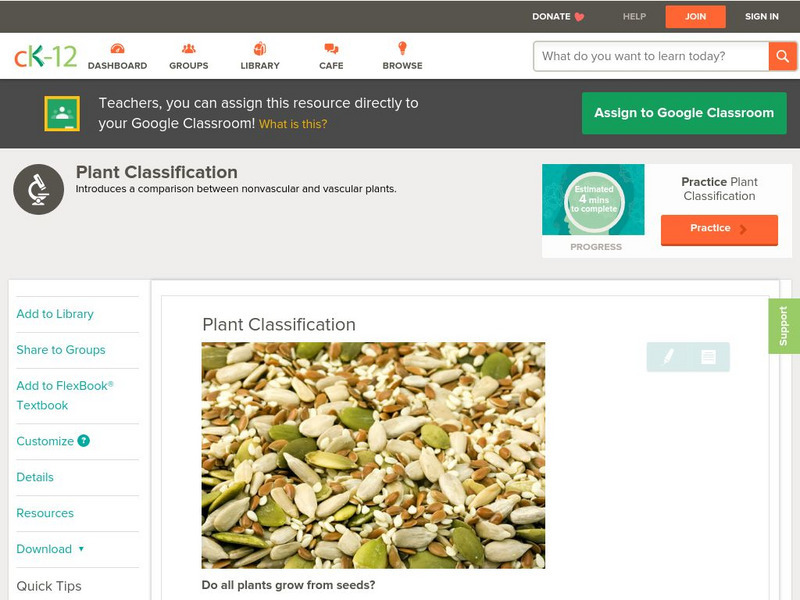Hi, what do you want to do?
University of Illinois
University of Illinois Extension: The Great Plant Escape Parts of a Seed
Help Detective Le Plant discover how a seed grows into a plant. Students will learn to describe a seed's structure and what's needed for seed growth.
PBS
Pbs Learning Media: Animals and Plants Can Live in a City!
In this interactive lesson, students learn that animals need air, food, water, and shelter, while plants need air, sunlight, and water. Students watch videos and engage with drawing and sorting activities to reinforce their learning....
PBS
Pbs Learning Media: Write Now! Career Prompts: Plant Management/financial Affairs
This Career Clip features Frank Sabernowski, Plant Management/Financial Affairs staff member at Bosch-Rexroth Corporation. Frank discusses teamwork and why understanding others is important in producing a successful final product.
NBC
Nbc Learn: Chemistry of Green: Chlorophyll
In this video/lesson series you will learn the role of chlorophyll in photosynthesis, and the role of pigments in making plants green (or making them appear green). Also in this collection: news stories from the archives of NBC News and...
Louisiana Department of Education
Louisiana Doe: Louisiana Believes: English Language Arts: Grade K: From Seed to Plant
Students gather information from a variety of texts- literary and informational- to describe the connection between people, events, ideas, and pieces of information. Students are introduced to life cycles by learning about how a plant...
Sophia Learning
Sophia: Plant Reproduction: Lesson 2
This lesson will provide an overview of plant reproduction.
University of Illinois
University of Illinois Extension: Great Plant Escape: What Is the Life Cycle of a Plant?
In this interactive lesson, students learn about categories of plants, plant parts, life cycle, what plants need to grow, and edible plant parts.
Alabama Learning Exchange
Alex: What Kind of Plant Is It?
This lesson plan provides a fun way for students to learn to classify plants as vascular and nonvascular. Students will use drawing software to create pictures of vascular and nonvascular plants.
Alabama Learning Exchange
Alex: The Great Plant Escape
This is a WebQuest that is designed to introduce students to plant science. Activities enhance student's math, science, language arts, social studies, music and art. There are many options in this program. Choose any or all of the...
Science & Plants for Schools
Science & Plants for Schools: Parts of a Plant and Their Functions [Pdf]
A 44-page booklet with many different lessons, booklets, games, and templates that enhance learning about plants.
TeachEngineering
Teach Engineering: Water Desalination Plant
Students use a thermal process approach to design, build and test a small-scale desalination plant that is capable of significantly removing the salt content from a saltwater solution. Students use a saltwater circuit to test the...
E-learning for Kids
E Learning for Kids: Math: Elephant Plant: Multiplication, Division and Fractions
Aasha is learning about multiplication. Can you help her?
Other
Coillte: Module 3: Learn About Trees [Pdf]
Print and complete the activities and experiments in this 22-page handout to learn more about how a tree lives, seeds and planting them, types of trees, and trees and wildlife.
PBS
Pbs Learning Media: City Farm
Players learn about sustainable practices by growing crops, protecting them against unforeseen problems, and determining how best to conserve resources in this interactive game.
Smithsonian Institution
Smithsonian Learning Lab: Plants and Animals: Partners in Pollination
Smithsonian Education presents a series of three lesson plans whose focus is plants and animals in their role as partners in pollination. Each activity comes complete with clear learning objectives, materials list, subjects covered,...
CK-12 Foundation
Ck 12: Life Science: Plant Like Protists
[Free Registration/Login may be required to access all resource tools.] Plant-like protists are known as algae. They are a large and diverse group. Plant-like protists are autotrophs. This means that they produce their own food. They...
CK-12 Foundation
Ck 12: Life Science: Plant Hormones
[Free Registration/Login may be required to access all resource tools.] Plants may not move, but that does not mean they don't respond to their environment. Plants can sense gravity, light, touch, and seasonal changes. Learn more about...
Sophia Learning
Sophia: Plant Kingdom: Angiosperms
In this illustrated introduction to angiosperms, learn about the structure and other characteristics of flowering plants.
Royal Botanic Gardens
Plant Cultures: Cardamom
Did you know that cardamom is the third most expensive spice in the world? Learn more about this interesting plant as you delve into the history, production, medicinal properties and more.
Sophia Learning
Sophia: Plant Kingdom: Ferns: Lesson 1
This lesson will explain the characteristics and function of fern plants. It is 1 of 4 in the series titled "Plant Kingdom: Ferns."
Read Works
Read Works: Fossils & Dinosaurs Plant Eaters
[Free Registration/Login Required] This passage describes an example of a plant-eating dinosaur, the Stegosaurus, its appearance, and its eating habits. This passage is a stand-alone curricular piece that reinforces essential reading...
Sophia Learning
Sophia: Plant Kingdom: Photosynthesis
An introduction to the nitrogen cycle as it relates to plant photosynthesis. Find out how plants obtain the nitrogen they need for life.
CK-12 Foundation
Ck 12: Life Science: Plant Classification
[Free Registration/Login may be required to access all resource tools.] Do all plants grow from seeds? No, there are actually a few plants that do not make seeds. Whether or not a plant makes seeds is one criteria used to classify...
Enchanted Learning
Enchanted Learning: Plants
Enchanted Learning provides information an illustrated plant dictionary as well as printouts, flower anatomy, and plant-related crafts.





















